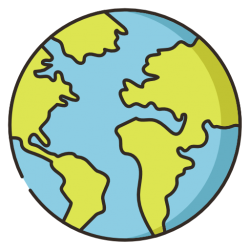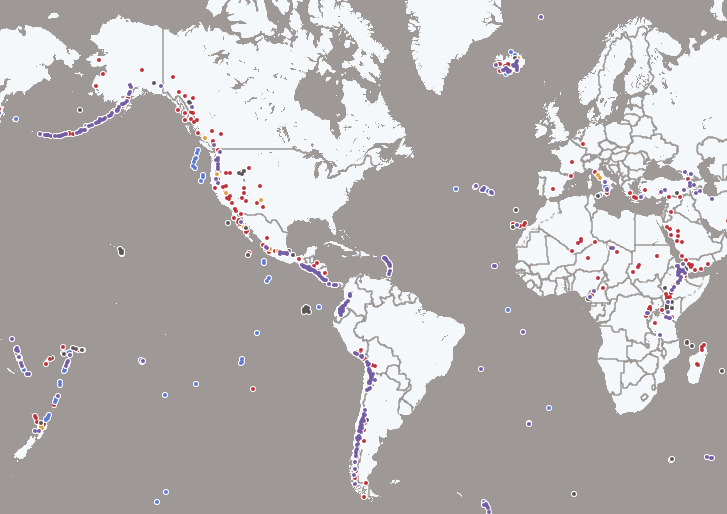The Smithsonian Institution’s Global Volcanism Program (GVP) documents Earth’s volcanoes and their eruptive history over the past 10,000 years. The GVP reports on current eruptions from around the world and maintains a database repository on active volcanoes and their eruptions. GVP is housed in the Department of Mineral Sciences, part of the National Museum of Natural History, on the National Mall in Washington, D.C.
The GVP database includes the names, locations, types, and features of more than 1,500 volcanoes with eruptions during the Holocene period (approximately the last 10,000 years) or exhibiting current unrest.
Below I present a map of Volcanic Eruptions in Holocene with differentiation of volcano types.
Legend
| Volcano Type | Description |
| Stratovolcano | A stratovolcano, also known as a composite volcano, is a conical volcano built up by many layers (strata) of hardened lava, tephra, pumice, and ash. Unlike shield volcanoes, stratovolcanoes are characterized by a steep profile with a summit crater and periodic intervals of explosive eruptions and effusive eruptions, although some have collapsed summit craters called calderas. |
| Shield | A shield volcano is a type of volcano usually composed almost entirely of fluid lava flows. It is named for its low profile, resembling a warrior’s shield lying on the ground. This is caused by the highly fluid (low viscosity) lava erupted, which travels farther than lava erupted from a stratovolcano, and results in the steady accumulation of broad sheets of lava, building up the shield volcano’s distinctive form. |
| Submarine | Submarine volcanoes are underwater vents or fissures in the Earth’s surface from which magma can erupt. A large number of submarine volcanoes are located near areas of tectonic plate movement, known as mid-ocean ridges. The volcanoes at mid-ocean ridges alone are estimated to account for 75% of the magma output on Earth. |
| Caldera | A caldera is a large cauldron-like hollow that forms shortly after the emptying of a magma chamber/reservoir in a volcanic eruption. When large volumes of magma erupted over a short time, structural support for the rock above the magma chamber is lost. |
| Other | Any other volcanoes that are not fitted into a group above. |
More information and sources:
- https://www.kaggle.com/smithsonian/volcanic-eruptions/ – used a dataset on Kaggle website
- https://xyz.here.com – used HERE XYZ Studio in creating an interactive map

